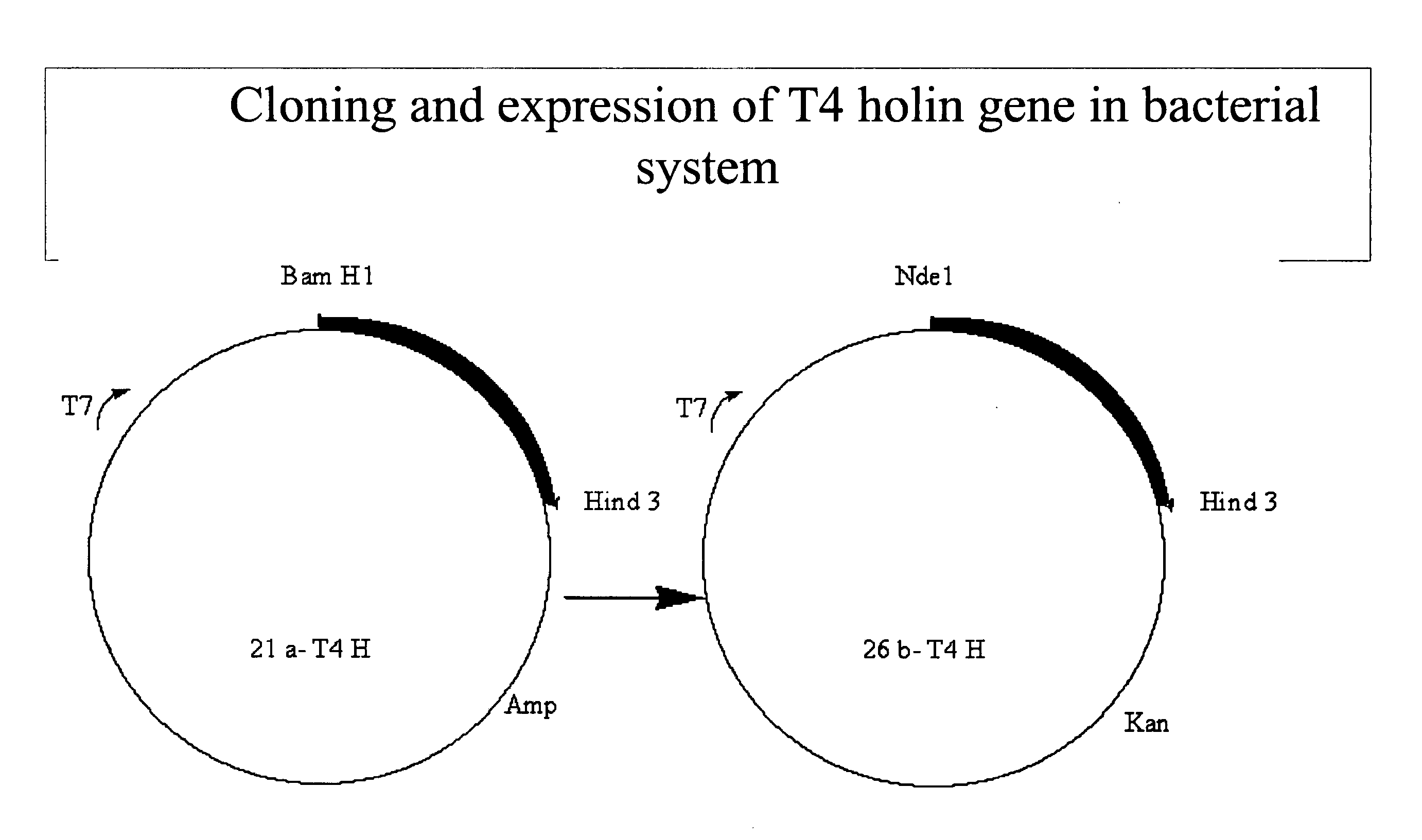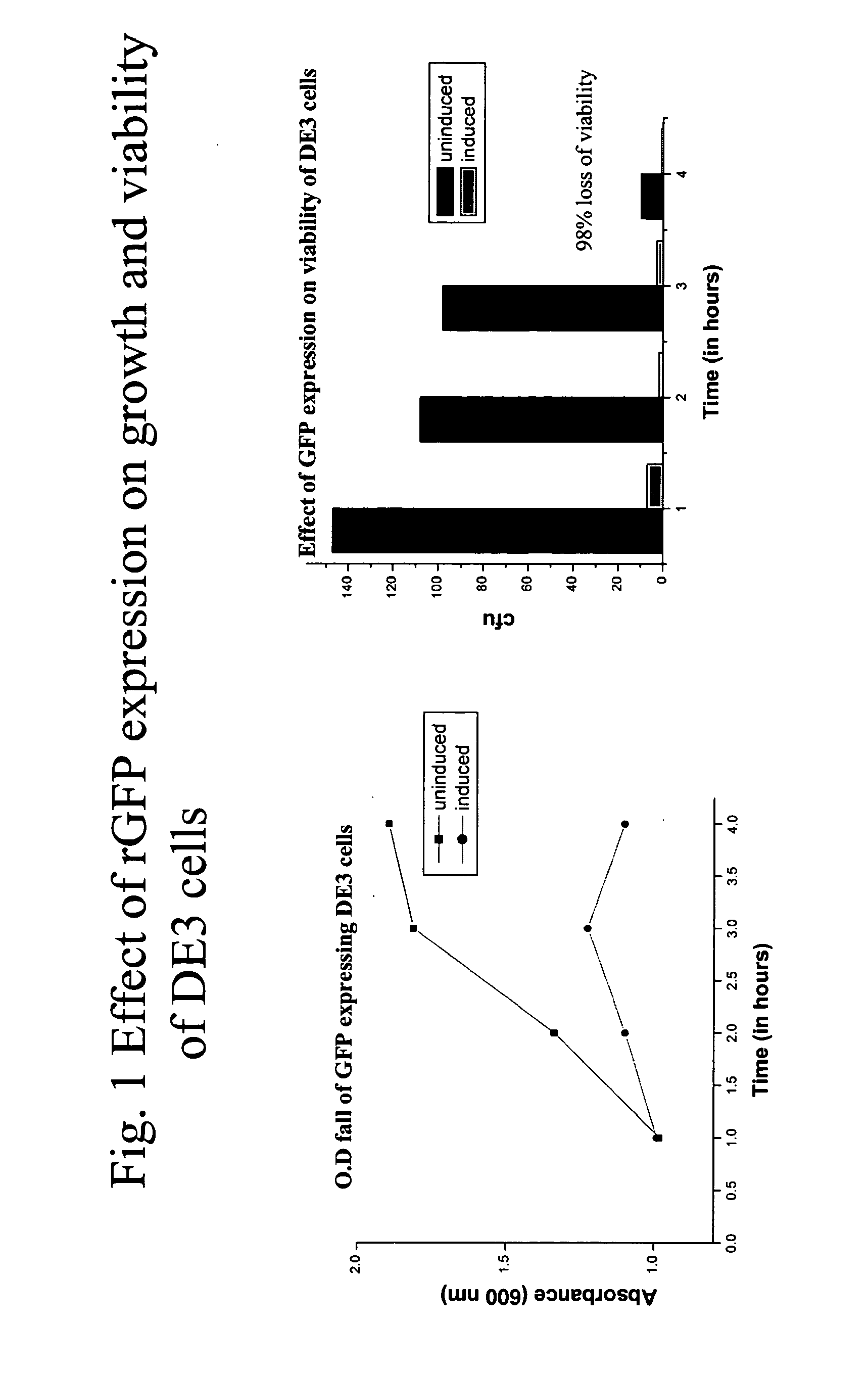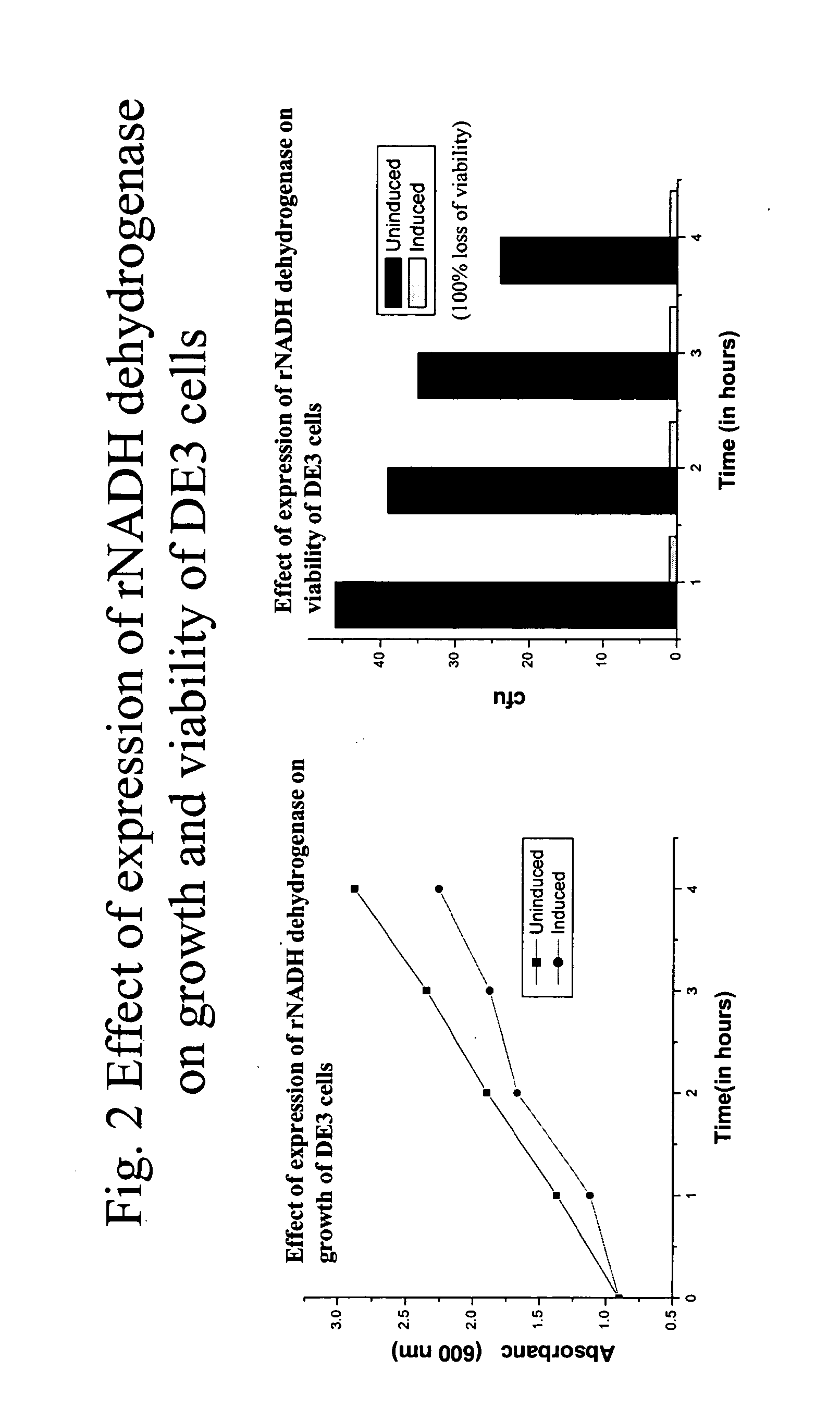Incapacitated whole-cell immunogenic bacterial compositions produced by recombinant expression
a technology of immunogenic bacteria and composition, which is applied in the direction of immunological disorders, human health protection, antibody medical ingredients, etc., can solve the problems of severe or fatal reactions, ineffective vaccination, and live attenuated vaccinations, so as to reduce the risk of causing disease and low rates
- Summary
- Abstract
- Description
- Claims
- Application Information
AI Technical Summary
Benefits of technology
Problems solved by technology
Method used
Image
Examples
example 1
Construction of an Expression Cassette With a Gene of Interest Using Different Promoters:
[0156]The pTrc, ptac and araBAD promoters were tested for their effect on expression of various recombinant proteins and also on viability of the cells expressing the recombinant proteins.
[0157]Gene expression from foreign promoters. Many proteins are expressed at low levels in vivo. To produce high levels of a protein, it is often useful to clone the gene downstream of a well-characterized, regulated promoter. Inducing transcription from the regulated promoter thus results in elevated expression of the downstream gene product. If the regulated promoter can be tightly down-regulated (e.g., turned off), this also provides a method of conditionally depleting the cell of a gene product. A variety of regulated promoters can be used for this purpose. A few examples are described below.
[0158]Ptac The tac promoter / operator (PTAC) is one of the most widely used expression systems. Ptac is a strong hybri...
example 2
Construction of an Expression Cassette Under T7 and Trc Promoter
[0167]This example describes cloning and expression of different types of heterologous proteins in the strong phage promoter system—T7 promoter. The genes are GFP from jellyfish Aequorea Victoria, NADH dehydrogenase of Micrococcus luteus, ndd gene of T4 bacteriophage etc.
[0168]GFP: The GFP gene from jellyfish Aequorea Victoria in the plasmid pGLO (Biorad Laboratories, USA) is cloned at the EcoR1 site of the pRSET vector and the recombinants carrying the GFP gene are selected by restriction analysis. The plasmids are later used to transform BL21(DE3) cells for expression of the same monitored after IPTG induction. The BL21 has a potential advantage of being deficient in lon protease and also lacks ompT—an outer membrane protease that can degrade proteins. Bacteriophage DE3 is a lambda derivative that has the immunity region of the phage 21 and carries a DNA fragment containing the lacI gene, lacUV5 promoter, the beginnin...
example 3
[0186]An animal model is used to demonstrate that bacteria incapacitated by the present invention are capable of inducing an immune response in the host animal. The animal is vaccinated with an incapacitated immunogen prepared, e.g., as described above. After a sufficient period of time to allow the production of an immune response, the animals are challenged with live form of the bacteria. The response of vaccinated animals is compared with control animals vaccinated with a control composition.
[0187]For example, whole cell immunogen is prepared as described. Animals are vaccinated with 3 appropriate doses of the incapacitated bacteria at appropriate intervals, e.g., 2-3 weeks between vaccinations. The vaccines are formulated with adjuvants and appropriate carriers and excipients. Antibody titers may be monitored compared to mock immunizations, e.g., immunizations with adjuvant lacking the incapacitated bacteria, and the immune responses may be characterized.
[0188...
PUM
| Property | Measurement | Unit |
|---|---|---|
| bacterial resistance | aaaaa | aaaaa |
| volume | aaaaa | aaaaa |
| antibody titers | aaaaa | aaaaa |
Abstract
Description
Claims
Application Information
 Login to View More
Login to View More - R&D
- Intellectual Property
- Life Sciences
- Materials
- Tech Scout
- Unparalleled Data Quality
- Higher Quality Content
- 60% Fewer Hallucinations
Browse by: Latest US Patents, China's latest patents, Technical Efficacy Thesaurus, Application Domain, Technology Topic, Popular Technical Reports.
© 2025 PatSnap. All rights reserved.Legal|Privacy policy|Modern Slavery Act Transparency Statement|Sitemap|About US| Contact US: help@patsnap.com



